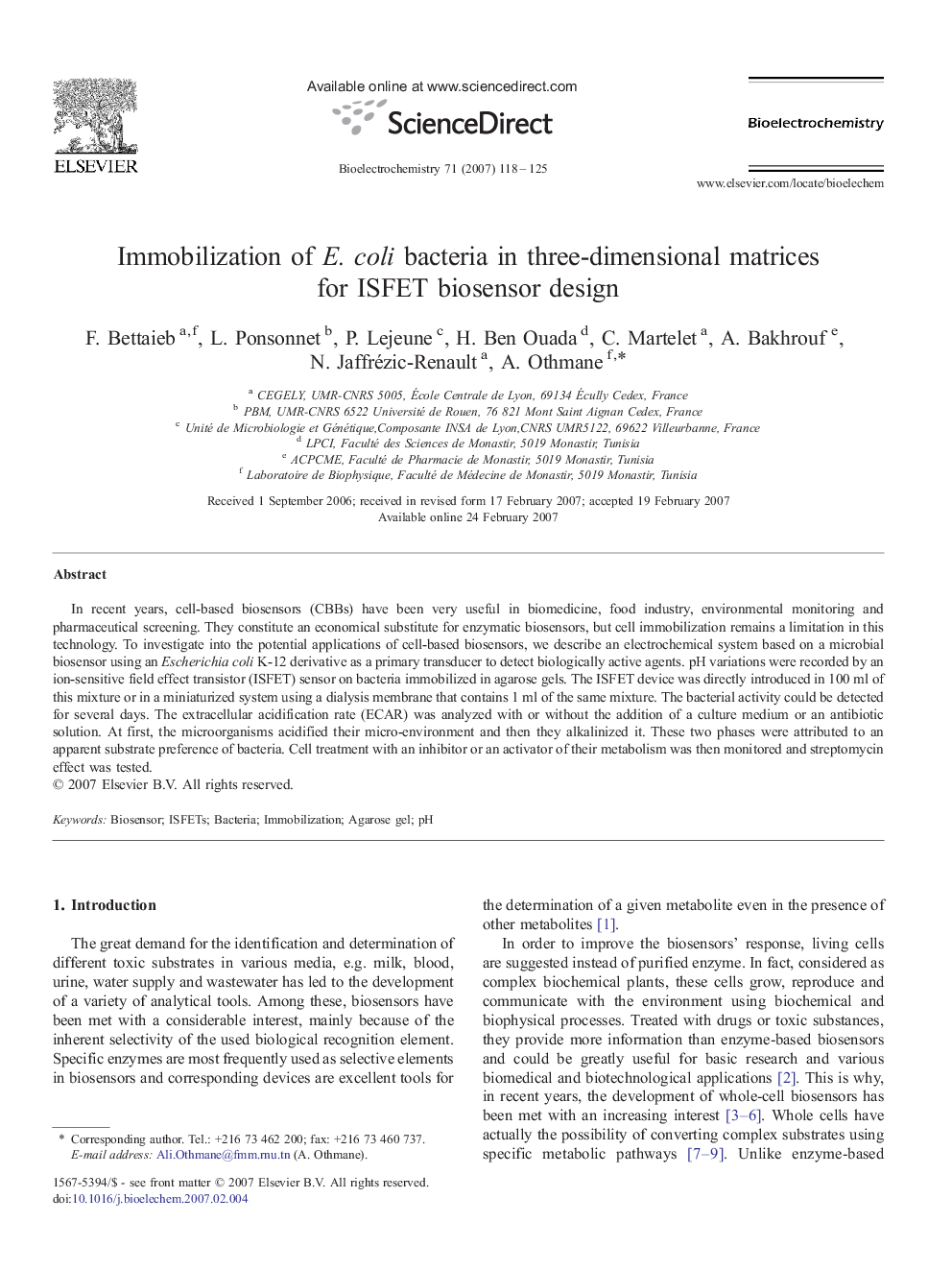| Article ID | Journal | Published Year | Pages | File Type |
|---|---|---|---|---|
| 1269183 | Bioelectrochemistry | 2007 | 8 Pages |
In recent years, cell-based biosensors (CBBs) have been very useful in biomedicine, food industry, environmental monitoring and pharmaceutical screening. They constitute an economical substitute for enzymatic biosensors, but cell immobilization remains a limitation in this technology. To investigate into the potential applications of cell-based biosensors, we describe an electrochemical system based on a microbial biosensor using an Escherichia coli K-12 derivative as a primary transducer to detect biologically active agents. pH variations were recorded by an ion-sensitive field effect transistor (ISFET) sensor on bacteria immobilized in agarose gels. The ISFET device was directly introduced in 100 ml of this mixture or in a miniaturized system using a dialysis membrane that contains 1 ml of the same mixture. The bacterial activity could be detected for several days. The extracellular acidification rate (ECAR) was analyzed with or without the addition of a culture medium or an antibiotic solution. At first, the microorganisms acidified their micro-environment and then they alkalinized it. These two phases were attributed to an apparent substrate preference of bacteria. Cell treatment with an inhibitor or an activator of their metabolism was then monitored and streptomycin effect was tested.
